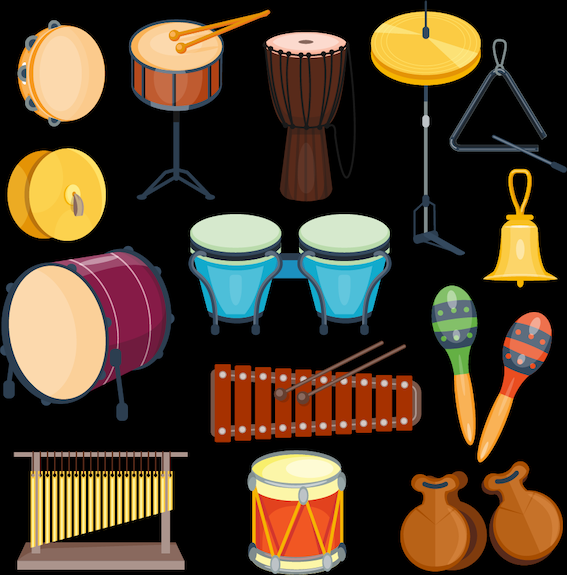Y2. Lesson 3. Practise new note do
Prior learning: Beat
Duration: 30 minutes
Materials: Woodblocks or claves
Keywords: Beat, rhythm, singing, chanting, partners, rhymes, circle games.
Difficulty: ![]()
Prepare
The minim [too]
Present
Practise
Do
 Melodic development
Melodic development
![]() Students discover where do is found in a known classroom song.
Students discover where do is found in a known classroom song.
- Students are seated and attentive.
- Explain to the class that they will discover another song with the new solfa note, do.
- Project the score of Pease Porridge on the board, using full-screen mode.
- Tell the class they will sing 'Pease porridge' with you and pay attention to where you are pointing.
- Lead the class in singing and point to every note as you do so.
- At the song's end, draw attention to the solfa note do, which is marked in red.
- Teach the hand sign for do and ask students to use it when singing the song again.

 Rhythmic development
Rhythmic development
![]() Students practise their knowledge of barlines and time signature.
Students practise their knowledge of barlines and time signature.
![SeeSaw [ta&titi] SeeSaw [ta&titi]](https://young-maestro.com/wp-content/uploads/2023/08/SeeSaw-tatiti.png)
- Students are seated and attentive.
- Lead the class in singing See-Saw using the time names of ta and ti-ti.
- Write the time names in stick notation on the board as you sing.
- Ask students what must be written before the first syllable [2].
- Ask what must be written at the end [double barline at the end].
- Ask what else must be written [barlines].
- Remind students of the strong and weak beats and that a barline is written before the strong beat.
- Choose a student to write in the barlines as you sing again with the class.
- Remind the class that there is no barline at the song's beginning.
 Creative movement
Creative movement
![]() Students prepare to develop their knowledge of the minim.
Students prepare to develop their knowledge of the minim.
- Students are seated and attentive.
- Begin by humming Sally Go Round The Sun and ask students the name of the song.
- Students then form a circle, turn to the left and begin singing the song, keeping the beat by stamping their feet.
- On 'boom', they jump and turn a half circle to face the opposite direction.
- On the next cycle, ask students not to sing 'sun' and 'boom' and repeat the song. Any student that makes a mistake is out.
- Repeat with variations to facilitate students' inner hearing development.
- This song contains the minim [too]. Ask students which words have an extra long note (sun, moon].
 Listening
Listening
![]() Students listen to Fossils by Saint-Saens and discover that the xylophone sounds like bones rattling!
Students listen to Fossils by Saint-Saens and discover that the xylophone sounds like bones rattling!
- Explain to students that they will hear a piece of music from a composer called Saint-Saens.
- The music is called Fossils, which features a xylophone to sound like skeletons playing card games, the bones clacking together to the beat!
- Ask students to listen carefully for the xylophones in the music and count how many times they appear.
 Visual learning
Visual learning
![]() Students use graphic worksheets to discover more about the solfa note, do.
Students use graphic worksheets to discover more about the solfa note, do.
Project the tone ladder to show where do is placed.
- Teach that if so and mi are in a space, do is in the space below mi. If so and mi are on a line, do is on the line below mi [refer to the image below].
- Students are tasked with tracing the outlines of musical notes as marked on the worksheets. This exercise is designed to familiarise them with the shapes and forms of various musical notes.
- Next, students are expected to fill in the noteheads on the worksheet. This activity aids in reinforcing their understanding of where the notes are placed on the staff and helps them recognise notes in actual musical notation.
- In certain worksheet sections, students are asked to draw the notehead for 'do,' the first note in the solfege scale.
- These exercises allow students to develop their understanding of the solfege system of musical notation and assist them in understanding pitch relationships in music.

 Instruments
Instruments
![]() Students play untuned percussion in response to teacher-led rhythmic questions.
Students play untuned percussion in response to teacher-led rhythmic questions.

- Distribute a variety of untuned percussion to students in your usual fashion.
- Explain that you will play a rhythmic phrase from a known song, and students must complete the phrase on their instrument.
- To assist students, hum the first two bars of a simple song such as Snail Snail and play the rhythm of the first phrase on a woodblock (or similar).
- Students must complete the song's rhythm using their instruments.
- When secure, choose another simple song and repeat the process.
- Extra fun may be had by dividing the class in two groups and awarding points for every correct answer.
 Part work
Part work
![]() Students respond with hand signs in response to the teacher singing phrases.
Students respond with hand signs in response to the teacher singing phrases.
- Explain to students that you will sing phrases of a song, and they must respond with hand signs.
- Sing Ickle Ockle Blue Bottle - students respond with so-so mi-mi so mi-mi.
- Sing Kangaroo Skippy Roo - students respond with so-so mi so-so mi.
- Sing Hot Cross Buns - students respond with hand signs for mi re do.
- The above are examples, so choose which songs you teach in your student's repertoire.
Students section

 Assess
Assess
Suggested lessons
Y1. Beat II

Y1. Beat III

Y1. Beat IV

